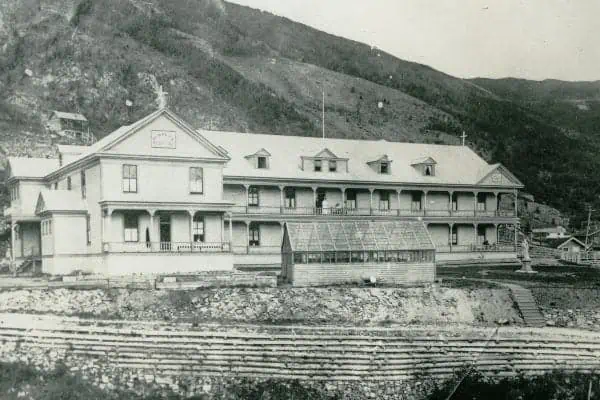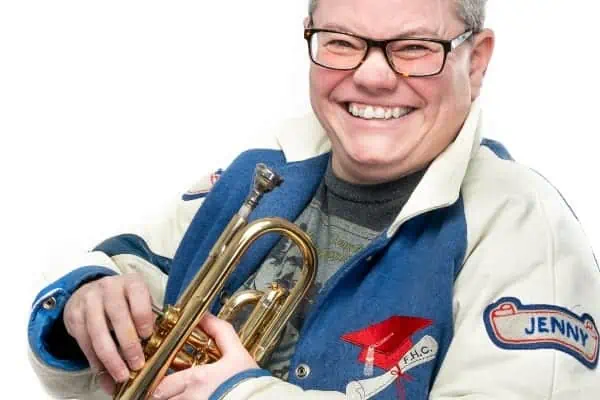Gold Show weekend in Dawson City. The town teems with things to do, businesses starting up for the busy tourist season and fresh young faces just come north to staff that season.
Runners compete in the Henry Gulch 5 K run and win gold nuggets. Bombay Peggy’s hums after the Odd Fellows Ballroom empties of viewers for the first annual Break Up Theatre Festival.
In the ODDGallery, Keith Langergraber’s show, Partially Buried, sets up a dialogue between the kind of objects you might find out on the land and drawings of those objects.
Langergraber is currently in Dawson teaching a “Field School”, a course offered collaboratively by The Klondike Institute of Arts & Culture’s School of Visual Arts (SOVA) and the Thompson Rivers University in Kamloops.
For a month, 15 students, mostly from Kamloops, will join Landergraber in adventures out on the land, observing, writing and drawing from what they find.
The students assisted with installing the show, and helped find the old stovepipes and other debris that’s piled up behind the exhibit’s centrepiece, a shack leaning forward.
In his artist statement, Landergraber says his “reconstructed shed is held in improbable stasis that could only be found in a museological model.”
To my eye, fresh from seeing the old buildings on the North Fork ditch road, that have been leaning over the rushing spring North Branch of the Klondike River for years, this angle doesn’t seem so extreme. In a city where most buildings are straight up and down, the contrast and threat of collapse might seem more dramatic.
When I look into the shed, I’m not sure if what I’m seeing is abandoned or in use. The floor of the shed is only the gallery floor, covered with a thin film of dirt, with a few objects scattered on the floor, chain and the metal framing from an old-style backpack.
The film of dirt conveys to me that I don’t want to step in there and add my footprints to that layer of earth. The backpack frame seems like debris, but the stainless steel thermos seems like something just set aside. The knife and hatchet on the wall wouldn’t still be there if the open-sided building were truly abandoned.
Opposite the shed, a drawing of a walking man hangs from tacks. The image is cropped so that his feet are off the paper, walking through some outlines of what look like large rocks. Is he meant to be the shed’s inhabitant? He seems oddly dressed for it, in his skinny jeans and white shirt.
I enjoy the way the artist has used horizontal lines to draw this figure. Pale lines occur in these soft, horizontal marks. I wonder if they’re what’s left after pencil marks were erased, or if the artist just used some rigid point to etch a guiding outline into the soft, thick paper.
This drawing is unique in the show, in its lack of a hard-edged outline.
Most of the drawings have hard outlines and float in white space on the page.
Over a shelf housing found objects, Landgraber has drawn found objects onto tea-stained paper with flecks of bark in it. Many of the subjects in these drawings are not immediately identifiable—just outlined, shaded lumps.
The heavy outlines and shading make these illustrations look like the work of someone who hasn’t yet mastered their drawing skills. The way the lines are scattered across the paper seems to deliberately overlook ideas of composition. Are they meant to be the exploratory drawings made by the imaginary inhabitant of the shack?
Over the campfire ring, the artist has hung a drawing of loosely arranged rocks. The artist states that it “endeavours to float in space, thereby establishing an uneasy relationship with the campfire in front of the shed.” So maybe these floating images are deliberately out of place … but it undermines their success as drawings, and I’m not clear exactly where this uneasiness is supposed to take me.
There is a sketchbook with similar-style pen-and-ink drawings for viewers to look through. They’re labelled Fig. 1, Fig. 2, Fig. 3, with a key at the bottom that reads, for example, 1. Snowshoe Hare, 2. Brown Trout, 3. Pop Can tab.
Most pages include animals, as well as some human-made discard easily found on the land. As you leaf through the book, some of the drawings get more whimsical—a deer silhouette behind a deer mouse, for example.
In the artist statement, we are told these drawings “mimic 18th century botanical drawings that have gone awry as the character that inhabited the shed undergoes a mental change after weeks of isolation.” The end products are not really that odd, though.
The show also includes a six-by-eight-foot drawing on four sheets of paper. Near but not at the centre of the four sheets, a stylized tree extends branches up and stubby roots downwards. Nestled among the branches are little houses or buildings of some kind. On the four pages, scattered and floating like the objects in the other drawings, various buildings are depicted, including a wobbly shack, a dilapidated motor home, something built into a mound of dirt, an octagonal barn, high caches, a large, multi-module building that looks a bit like a university, triangular cabins with roman numerals on them and a geodesic dome on three legs nestled under a small tree.
The artist statement calls it an “imaginary modernist community”, but it’s hard to see the context that joins all of these floating images.
But perhaps that’s the disconnect the artist is working with. Langergraber calls himself an “artist and cultural tourist”. Scattered, ungrounded impressions, taking an object here or there as a souvenir—this is a mode of thinking characteristic of tourism.
Tourist or local, go see the show and see what you think.
Partially Buried is on exhibit at the ODDGallery in Dawson City until June 18.




